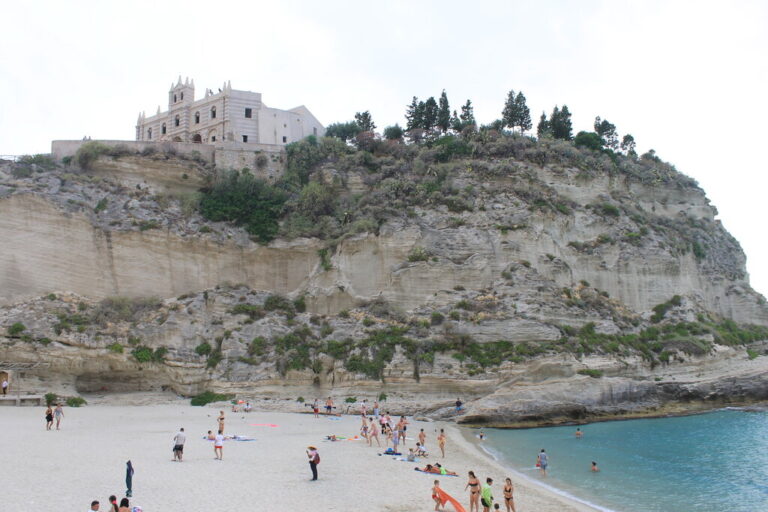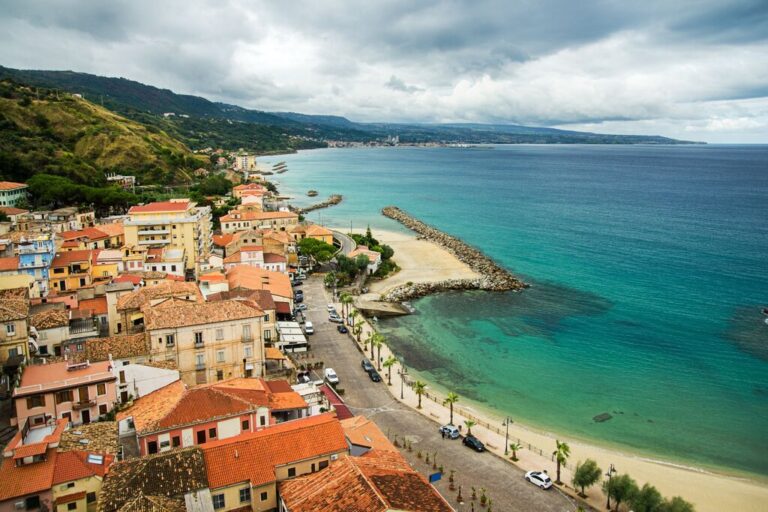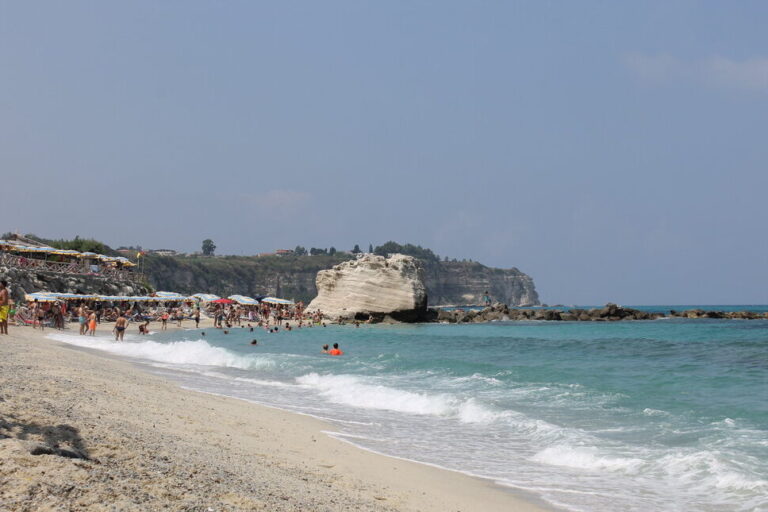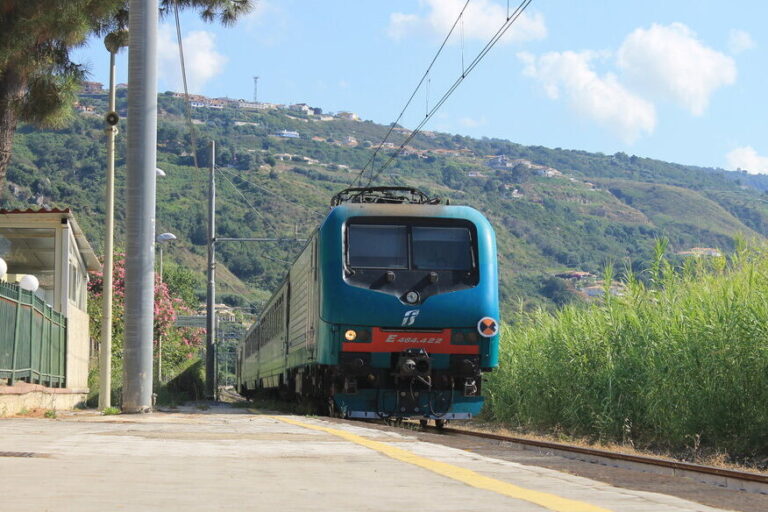Best Calabria Food: What to Eat in Calabria & Traditional Dishes to Try
Calabria food is bold, rustic, and packed with spice. Sitting at the southern tip of Italy, this region is known for simple, high-quality ingredients, with dishes that highlight local produce, fresh seafood, and centuries-old traditions.
When visiting Calabria, expect to find sweet red onions from Tropea, fiery peperoncino, and rich, spreadable ‘nduja on almost every menu. Along the coast, swordfish is a favourite, while inland, you’ll find hearty pasta dishes, slow-cooked stews, and hand-shaped sausages like soppressata.
Before visiting, I had no idea how much Calabrian food would stick with me—literally and figuratively. Now, ‘nduja is a staple in our house, and a bottle of Amaro del Capo is usually on our shelf. Whether it’s the spice, the simplicity, or the strong traditions behind every dish, there’s something about Calabrian food that stays with you long after you’ve left.
In this guide, we’ll break down the best foods to try in Calabria, from local specialties to traditional dishes you won’t want to miss. Plus, we’ll share where to find them and what to drink while you’re there.
This post contains affiliate links. If you make a purchase through one of these links, we may earn a small commission at no extra cost to you. As always, we only recommend products and experiences we truly believe in.
Iconic Calabrian Food: Essential Ingredients & Local Specialties
Calabria food is built around a few key ingredients that show up in almost every dish. From spicy ‘nduja to sweet Tropea onions, these are the staple foods that define Calabrian cuisine.
‘Nduja: Calabria’s Famous Spicy Spread
If there’s one food that screams Calabria, it’s ‘nduja.
This soft, spicy spread is made from pork fat and fiery Calabrian chili peppers, and while it originally came from the small town of Spilinga, it’s now a symbol of Calabrian cuisine and is used in dishes all over Italy. It’s bold, smoky, and seriously addictive—especially if you like a bit of heat.
The first time I saw it was in a tiny shop in Tropea. A local older man was spreading it on bread and offering samples, and I honestly thought it was some kind of jam. I took a bite expecting sweet… and wow, it was definitely not jam. That hit of heat took me by surprise—but in the best way.
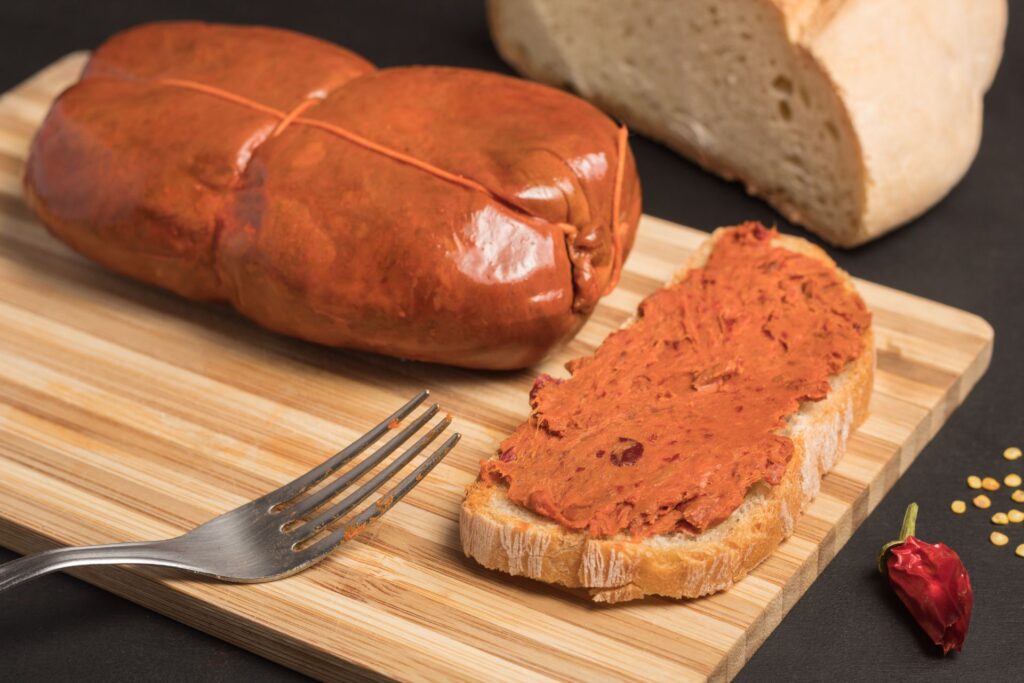
In Calabria, you’ll find ‘nduja spread on crusty bread, melted into pasta sauces, stirred into stews, or even used as a pizza topping for an extra kick of heat. That rich, spicy flavour adds a punch to just about anything.
Try It In:
- Spread on bread – A simple but flavour-packed appetizer.
- Melted into pasta sauces – Adds heat and richness.
- Topped on pizza – A bold twist on traditional pizza.
- Stirred into stews – Deepens the flavour with smoky spice.
👉 Where to Try It: Visit Spilinga, its birthplace, or find it in any salumeria (deli) across Calabria.
Tropea Red Onions: Calabria’s Sweetest Ingredient
Tropea red onions are unlike any other onion—so mild and sweet that locals will tell you you can bite into one like an apple. I didn’t believe it when my friend (who has a house in Tropea) said that… until she handed me one and proved it.
You’ll see these onions hanging in bunches all over town—outside shops, in markets, even from balconies. And if you’re eating out in Calabria, you’ll probably taste them in just about everything.
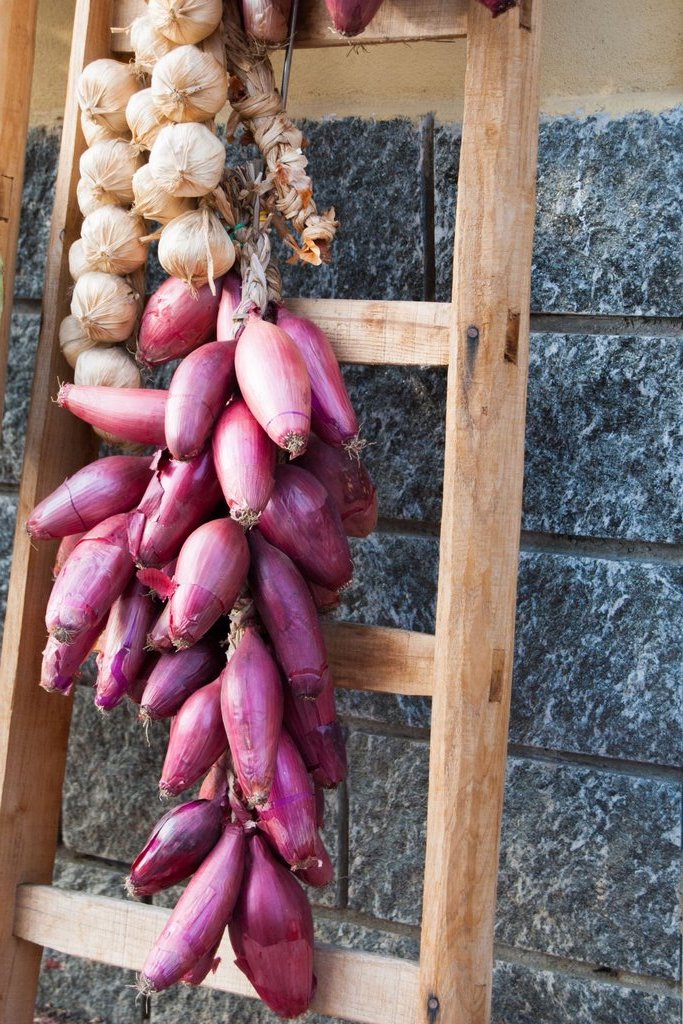
Grown in the rich soil along Calabria’s Tyrrhenian coast, Tropea onions owe their sweetness to the region’s warm sun and coastal breeze. They’re used in everything from fresh salads to slow-cooked sauces. You’ll find them caramelized into sweet onion jam, pickled as a tangy side, or simply sliced raw on sandwiches and bruschetta. Their natural sweetness also balances out the spice in many Calabrian dishes—making them a true local staple.
Try it In:
- Raw in Salads & Sandwiches – Adds natural sweetness.
- Caramelized into Onion Jam – Served with cheese or meats.
- Pickled Tropea Onions – A tangy side dish.
- Pasta Sauces & Soups – Enhances the sweetness of tomatoes.
👉 Where to Find It: Tropea’s markets and traditional trattorias are the best places to sample fresh Tropea onions, as well as unique products like Tropea onion jam.
Peperoncino: The Spicy Heart of Calabrian Cuisine
Peperoncino is at the core of Calabrian cooking, adding heat and depth to almost every dish. Calabria is famous for its small, fiery red chili peppers, which thrive in the region’s warm climate. They’re used fresh, dried, crushed, or infused into oils, making them one of the most essential ingredients in the local kitchen.

The town of Diamante is considered the peperoncino capital of Calabria, and every September, it hosts the Peperoncino Festival, celebrating this signature spice with tastings, cooking demonstrations, and even a spicy pepper-eating contest.
Try It In:
- Crushed in pasta & meat dishes – A must-have in Calabrian sauces.
- Infused into olive oil – For a spicy finishing drizzle.
- Stuffed into cheeses & cured meats – Adds an extra kick.
- Peperoncino jam – A sweet and spicy spread for cheeses.
👉 Where to Try It: Visit the Peperoncino Festival in Diamante, or pick up dried peperoncini at any local market.
Soppressata di Calabria: A Cured Sausage with a Spicy Kick
Soppressata is one of Calabria’s most well-known cured meats, made from high-quality pork, black pepper, and peperoncino. Unlike ‘nduja, which is soft and spreadable, soppressata is firm, dry-aged, and sliced like salami. It’s a staple in antipasto platters and is often paired with cheese, olives, and crusty bread.
In Calabria, soppressata is made using traditional curing methods, where the sausages are pressed under weights (hence the name “soppressata”) and then air-dried for several months. The result is a rich, slightly spicy, and deeply flavourful cured meat.

Try It In:
- Sliced on an antipasto board – Best with cheese, olives, and bread.
- In sandwiches – A classic snack with fresh Calabrian bread.
- Diced in pasta dishes – Adds depth and a touch of spice.
- Paired with local red wines – Try it with Ciro DOC.
👉 Where to Try It: Any deli or market in Calabria
Swordfish (Pesce Spada): A Coastal Favourite
Swordfish is one of the most famous seafood ingredients in Calabria, particularly along the southern coast in Scilla and Reggio Calabria. For centuries, swordfish has been a staple in local fishing traditions, and it’s still caught fresh and served in simple, flavourful dishes.
I tried swordfish in Tropea, and it was excellent—almost as good as the very first swordfish steak I had in Portugal years ago. If you love seafood, this is definitely a must-try when you’re in Calabria.
Try It In:
- Pesce Spada alla Ghiotta – Swordfish cooked in a rich tomato, olive, and caper sauce.
- Grilled swordfish steaks – Served with lemon and olive oil.
- Swordfish involtini – Thin swordfish slices rolled with breadcrumbs, garlic, and herbs.
👉 Where to Try It: The best swordfish dishes are found in Scilla and Reggio Calabria, but you’ll also find fantastic options in Tropea and other coastal towns.
Tartufo di Pizzo: Calabria’s Most Famous Dessert
Tartufo di Pizzo is not your average gelato—this handcrafted dessert is a rich, velvety ball of chocolate and hazelnut gelato with a melted chocolate center, dusted with pure cocoa powder. It was invented in Pizzo, a seaside town in Calabria, and has since become one of the region’s most famous treats.
Unlike regular gelato, tartufo is shaped by hand and has a surprise molten core that melts as you eat it. While the classic tartufo is made with chocolate and hazelnut, you’ll also find variations like pistachio, white chocolate, and coffee.
Here’s a few popular options:
- Classic Tartufo – Chocolate-hazelnut with a melted chocolate center.
- White Tartufo – Vanilla gelato with a white chocolate core.
- Pistachio Tartufo – A newer variation with rich pistachio flavors.
- Coffee Tartufo – For those who love a bold, espresso-infused twist.
👉 Where to Try It: The best tartufo is found in Pizzo, at historic gelaterias like Gelateria Ercole or Bar Dante.

Traditional Calabrian Dishes You Have to Try
Calabria’s cuisine is deeply rooted in peasant traditions, using simple ingredietns to create bold and flavourful dishes. From handmade pasta to slow-cooked stews, these meals have been enjoyed for generations and remain a staple in Calabrian kitchens today.
Here are some of the best traditional dishes to try in Calabria.
Fileja Pasta with ‘Nduja
Fileja is Calabria’s signature pasta, hand-rolled into thick, twisted strands that hold onto sauce beautifully. One of the most traditional ways to eat it is with ‘nduja, tomato puree, garlic, and fresh herbs, creating a bold, spicy dish packed with flavour.
This rustic pasta dish perfectly represents Calabria’s love of simple, high-quality ingredients. The heat from the ‘nduja is balanced by the sweetness of tomatoes, while garlic, rosemary, and parsley add depth. It’s a must-try for pasta lovers who enjoy a little spice.
Where to Try It:
Look for Fileja con ‘Nduja on the menu at traditional trattorias across Calabria, especially in Tropea and Vibo Valentia.
Frittole (Slow-Cooked Pork Stew)
Frittole is a rich, slow-cooked pork stew that is deeply rooted in Calabria’s peasant cooking traditions. Made using pork scraps, fat, and bones, it is slowly simmered for hours in its own rendered fat until tender and full of flavour. Traditionally, it was cooked in large copper pots over an open fire and was a dish meant to use every part of the pig—a true reflection of Calabria’s no-waste philosophy.
Frittole is most commonly eaten in the winter months and is often served with fresh bread, polenta, or potatoes to soak up the rich, savoury broth. Though it may not be as well-known as some of Calabria’s other dishes, it’s a must-try for those who want a taste of true rustic Calabrian cuisine.
Where to Try It:
You’ll find Frittole at traditional agriturismos and during local winter festivals, especially in southern Calabria.
Zuppa di Asparagi (Asparagus Soup)
Zuppa di Asparagi is a simple yet flavourful soup made with wild Calabrian asparagus, olive oil, garlic, and homemade broth. The asparagus used in this dish is typically foraged from the countryside, giving it a distinct, slightly bitter flavour that sets it apart from store-bought varieties.
This soup is especially popular in spring, when wild asparagus is in season. It’s often served as a light starter or paired with crusty bread for a heartier meal. Some variations include poached eggs or pecorino cheese, adding richness to the dish.
Where to Try It:
You’ll find Zuppa di Asparagi in local trattorias and agriturismos, especially during asparagus season in the spring months.
Lagane e Ceci (Pasta with Chickpeas)
Lagane e Ceci is a simple but hearty pasta dish that dates back to ancient times. Lagane, a wide, ribbon-like pasta similar to pappardelle, is traditionally made without eggs, giving it a slightly chewy, rustic texture. It’s tossed with chickpeas, garlic, rosemary, and olive oil, creating a dish that’s both comforting and packed with flavour.
This meal is a staple in Calabrian home cooking, especially in rural areas, where it has long been a source of nourishment and warmth. Despite its simplicity, the combination of creamy chickpeas, fragrant rosemary, and high-quality olive oil makes it incredibly satisfying.
Where to Try It:
You’ll find Lagane e Ceci at family-run trattorias and agriturismos throughout Calabria, particularly in mountainous and inland areas.
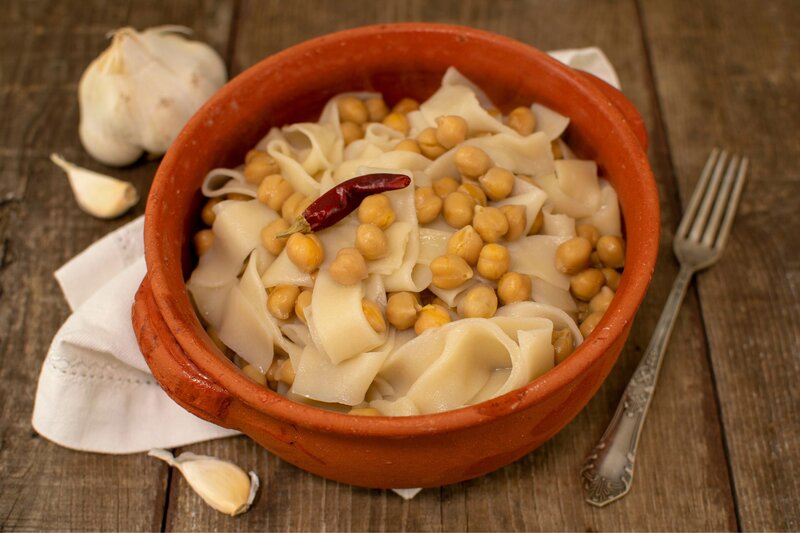
Calabria’s Famous Sweets & Desserts
Calabrian desserts are often simple, sweet, and rich in tradition, with recipes passed down for generations. Many are made with honey, nuts, and citrus, reflecting the region’s Mediterranean influences. Whether it’s a festive treat enjoyed during the holidays or a gelato-based indulgence, these traditional sweets are a must-try.
Pignolata (Honey-Coated Fried Dough)
Pignolata is a festive Calabrian dessert made of small, fried dough pieces coated in warm honey and often topped with sprinkles or powdered sugar. The dough is light and crispy, creating a sweet, sticky, and slightly chewy texture once drenched in honey.
This dessert is especially popular during Christmas and Carnevale, when families make large batches to share. Though it’s a simple treat, the combination of crispy dough and rich honey makes it an irresistible snack that’s hard to stop eating. My boys loved trying a version of this in Calabria during the summer—whether it was Pignolata or something similar, they couldn’t get enough of the honey-coated bites!
Where to Try It:
Pignolata is commonly found in Calabrian bakeries and pastry shops, especially around the holidays, but some places sell it year-round.
Mostaccioli (Spiced Honey Cookies)
Mostaccioli are hard, spiced honey cookies that have been a part of Calabria’s culinary traditions for centuries. Made with flour, honey, and warm spices, they were originally prepared by monks and are now a staple at festivals and celebrations. These cookies are often shaped into intricate designs, such as animals, hearts, or religious symbols, making them just as decorative as they are delicious.
The texture of Mostaccioli is very firm—they’re meant to be enjoyed slowly, often dunked in coffee, sweet wine, or milk to soften them. My boys tried these in Tropea, and even dipped in milk, they were a bit too crunchy for their taste—but still yummy! Some versions are glazed or decorated with nuts, adding an extra layer of flavour.
Where to Try It:
You’ll find Mostaccioli in Calabrian bakeries and markets, especially during festivals and holidays.

What to Drink in Calabria
Calabria’s drinks are just as bold as its food, with strong herbal liqueurs and historic wines that have been enjoyed for centuries. Whether it’s a chilled glass of Amaro del Capo after a meal or a sip of Ciro DOC wine alongside a plate of soppressata, these local beverages are an essential part of the region’s culinary experience.
Amaro del Capo: Calabria’s Famous Herbal Liqueur
Amaro del Capo is Calabria’s most famous digestivo, a herbal liqueur made with 29 different local herbs, roots, and citrus peels. Despite its complex blend of ingredients, it has a smooth, slightly bitter, and subtly sweet flavour, with hints of orange, licorice, and mint.
Unlike many other Italian amari, which are served at room temperature, Amaro del Capo is meant to be enjoyed ice-cold, straight from the freezer. The first time I tried it in Zambrone, I was surprised when it was served in a small glass pulled straight from the freezer—but after one sip, I understood why.
It’s the perfect way to end a meal in Calabria, and once you try it, I understood why. It’s sweeter than some liqueurs I’m used to, but oh so good, and it has become one of my personal favourites. Every time I have a sip, it brings back memories of our time in Italy.
Where to Try It:
You’ll find Amaro del Capo at restaurants and bars across Calabria, often served as a digestivo after a big meal. It’s also available in some liquor stores in North America, especially around the holidays – at least for us. But if you want to be sure you’ll have a bottle on hand, it makes for a great souvenir to bring home from Calabria.
Calabrian Wines: A Taste of the Region
Wine is a part of everyday life in Calabria—you’ll find it served at both lunch and dinner, whether you’re dining at a small trattoria or staying at a resort. At the resort we stayed at, a pitcher of wine was placed on the table for both meals, and when eating out, it’s just as common to be offered wine with lunch as it is with dinner. It’s not just a drink—it’s part of the meal, meant to complement the bold, rustic flavours of Calabrian cuisine.
Calabria has been producing wine for centuries—so much so that the ancient Greeks called it “Enotria” (Land of Wine). While Calabrian wines don’t have the same international fame as those from Tuscany or Piedmont, they’re a perfect match for the region’s bold and rustic food.
Two of the most well-known wines to try are:
- Ciro DOC – Calabria’s most famous wine, made primarily from Gaglioppo grapes. It’s a full-bodied red that pairs well with grilled meats and aged cheeses.
- Greco di Bianco DOC – A sweet white wine, made from sun-dried Greco Bianco grapes. It has a rich, honeyed flavour that’s perfect with desserts.
Where to Try It:
Look for Ciro DOC and Greco di Bianco DOC in local enotecas (wine bars), restaurants, and agriturismos throughout Calabria. Some specialty wine shops outside Italy may also carry them.
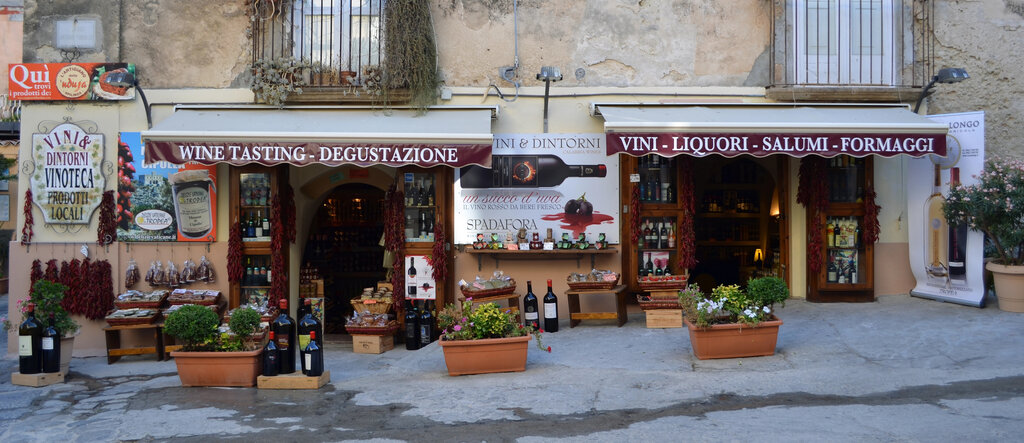
Where to Try Calabrian Food
The best way to experience Calabrian food is to eat where the locals eat—whether that’s in a small family-run trattoria, a seaside restaurant, or an agriturismo in the countryside. Some towns are known for specific specialties, making them worth a visit just for the food.
Here are some of the best places in Calabria to try local dishes.
Tropea – Best for Tropea onions and coastal cuisine
Tropea is famous for its sweet red onions, which you’ll find in everything from salads to pasta sauces and even onion jam. As you walk through town, you’ll often see farmers selling freshly harvested Tropea onions from wooden carts, making it easy to grab some straight from the source.
The town itself is a great place to explore – check out our guid on the best things to do in Tropea while you’re there.
Many restaurants in Tropea incorporate these onions into their dishes, whether it’s a simple bruschetta, a rich pasta sauce, or a side of pickled onions. For a great meal, try Il Convivio, where the fried onion fritters are a standout—even my kids loved them! Although I have to recommend the tuna with Tropea onions – it’s excellent and a great way to combine the famous red onions with fresh seafood.
Pizzo – The birthplace of Tartufo
Tartufo, the delicious chocolate gelato dessert, is a must-try in Pizzo. It was invented here, and there’s no better place to taste the original. If you’re driving to Tropea from the airport, Pizzo makes for the perfect stop. And if you’re spending time in Pizzo, you’ll have the chance to try it more than once—something you definitely won’t regret!
For the most authentic experience, head to Gelateria Ercole or Bar Dante, two historic spots known for serving the original Tartufo di Pizzo. While the classic version is chocolate and hazelnut, you’ll also find variations like pistachio, white chocolate, and coffee.
Spilinga – The home of ‘Nduja
If you want to try ‘nduja at its source, Spilinga is the place to go. This small town is where Calabria’s famous spicy spread was born, and you’ll find it everywhere—from butcher shops to local trattorias.
Many salumerias (delis) in Spilinga sell artisanal ‘nduja, perfect for bringing home a taste of Calabria. If you’re visiting in August, check out the Sagra della ‘Nduja, a festival celebrating this fiery specialty with tastings, food stalls, and live music.
Diamante – For peperoncino lovers
If you love spicy food, Diamante is the place to be. This seaside town is known as the chili pepper capital of Calabria, and you’ll find peperoncino in almost every dish, from pasta to cured meats and even desserts.
Diamante is also home to the annual Peperoncino Festival, held every September. The festival features spicy food tastings, cooking demonstrations, and even a peperoncino-eating contest—a must-visit for anyone who enjoys a little heat in their food.
Local shops sell dried chili peppers, infused olive oils, and spicy sauces, so it’s the perfect place to pick up some edible souvenirs. Diamante is also one of the most beautiful towns in Calabria—if you’re planning a visit, check out our guide to the best places to visit in Calabria.
Local shops sell dried chili peppers, infused olive oils, and spicy sauces, so it’s the perfect place to pick up some edible souvenirs.
Scilla & Reggio Calabria – Best for swordfish dishes
Along Calabria’s southern coast, fresh seafood is a staple, and no fish is more famous here than swordfish (pesce spada). Scilla, in particular, is known for its centuries-old swordfish fishing tradition, and you’ll find it on nearly every menu—grilled, baked, or served in a rich tomato and olive sauce (Pesce Spada alla Ghiotta).
Reggio Calabria is another great place to try swordfish dishes, often paired with local ingredients like Tropea onions and peperoncino. Many restaurants along the waterfront serve fresh, simply prepared swordfish, letting the flavour of the fish shine.
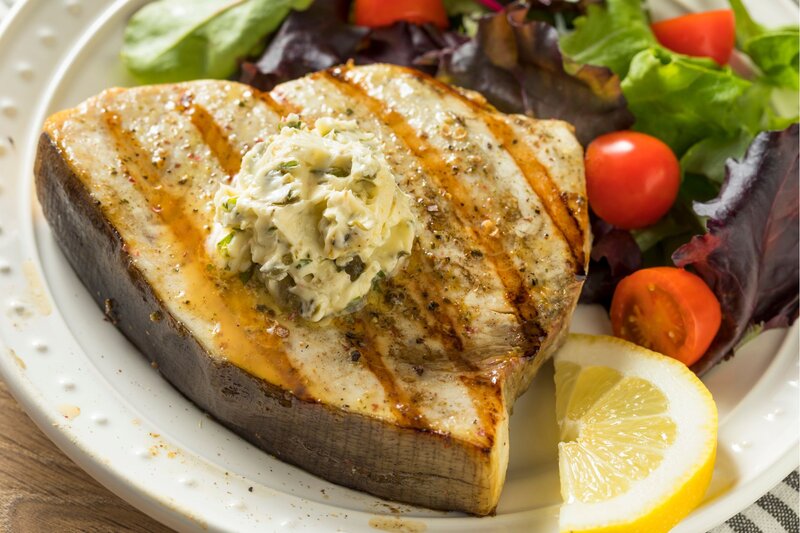
Final Thoughts: What to Eat in Calabria
Calabrian food is bold, rustic, and packed with flavour, from its famous spicy ‘nduja to the sweetness of Tropea onions and fresh swordfish along the coast. Whether you’re stopping for Tartufo in Pizzo (and you definitely should!), sampling peperoncino-infused dishes in Diamante, or enjoying a farm-to-table meal at an agriturismo, every bite tells a story of tradition and local ingredients.
Some of my favourite memories from Calabria are tied to food—like sipping Amaro del Capo after a long meal or discovering just how good a simple onion can taste in Tropea. If you’re visiting, make time to try these local dishes. And if you fall in love with the flavours (like I did), don’t leave without a jar of ‘nduja in your bag.
Buon appetito!
Planning more adventures in Calabria?
If you’re exploring the region, you might also want to check out our Calabria itinerary to help plan your trip. And while Tropea is one of the most popular spots in Calabria, be sure to check out this guide to see if Tropea is worth visiting for you. And if you’re figuring out where to base yourself, our guide on where to stay in Calabria has options for every type of traveler.



